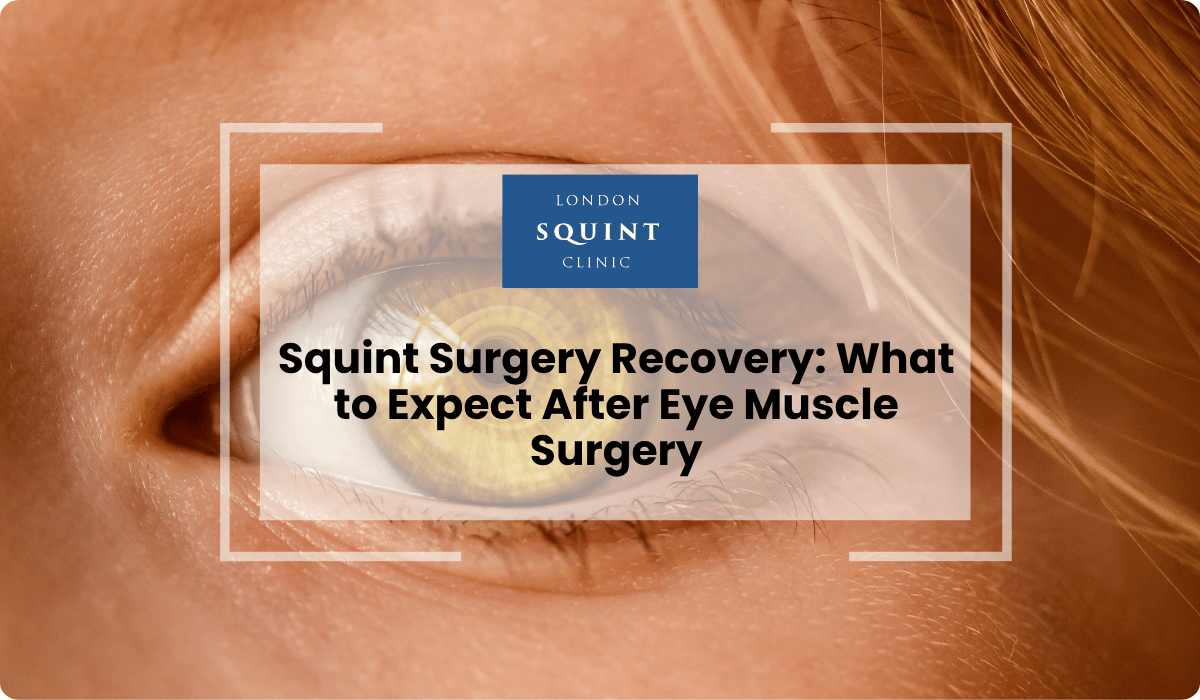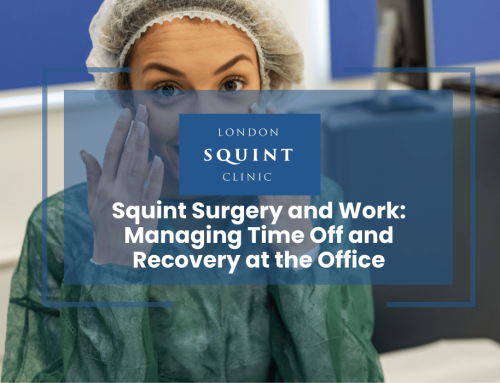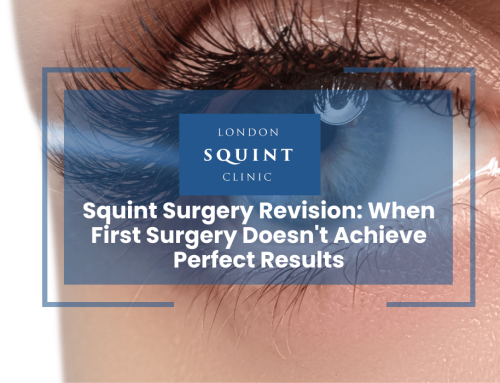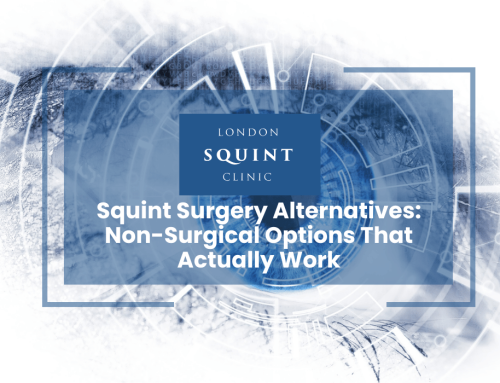Squint Surgery Recovery: What to Expect After Eye Muscle Surgery
Squint Surgery Recovery
- Complete recovery from squint surgery typically takes 4-6 weeks, with most discomfort subsiding within the first week
- The first 48 hours post-surgery are critical for proper healing; follow medication schedules and activity restrictions carefully
- Common side effects include eye redness, grittiness, watering, and temporary double vision
- Return to activities gradually: desk work after 1 week, swimming after 4 weeks, contact sports after 6-8 weeks
- Seek immediate medical attention for severe pain, vision loss, excessive swelling, or unusual discharge
- Long-term healing continues for 6-12 months as the brain adapts to new eye alignment
- Never skip follow-up appointments, even if recovery seems to be progressing well
Table of Contents
- Understanding the Squint Surgery Recovery Timeline
- First 48 Hours: Critical Post-Operative Care Instructions
- Managing Discomfort and Side Effects After Strabismus Surgery
- When Can I Return to Normal Activities After Squint Surgery?
- Potential Complications to Watch For During Recovery
- Long-Term Healing and Vision Improvement Expectations
- Follow-Up Care: Why Post-Surgery Appointments Matter
Understanding the Squint Surgery Recovery Timeline
Squint surgery recovery follows a predictable timeline, though individual experiences may vary based on the complexity of the procedure and personal healing factors. Understanding what to expect during this eye muscle healing process can help patients prepare mentally and physically for their recovery journey.
Most patients experience a complete recovery within 4-6 weeks following strabismus surgery, though the initial discomfort typically subsides within the first week. The eye alignment after surgery may continue to adjust subtly over several months as the muscles adapt to their new positions.
The recovery timeline typically progresses as follows:
- Day of surgery: Initial discomfort, watering, and redness
- Days 1-3: Peak discomfort period with moderate pain and irritation
- Days 4-7: Significant reduction in pain, continued redness
- Weeks 1-2: Noticeable improvement in comfort, diminishing redness
- Weeks 3-6: Resolution of most visible signs of surgery
- Months 1-3: Final stabilisation of eye position and vision
It’s important to note that children typically recover more quickly than adults, often returning to school within a week. Adults may require slightly longer periods away from work, depending on the nature of their occupation and the specific surgical technique employed.
First 48 Hours: Critical Post-Operative Care Instructions
The initial 48 hours after squint surgery represent the most critical period for post-operative eye care. During this time, patients should follow strict guidelines to protect the surgical site and promote optimal healing of the adjusted eye muscles.
Immediately after surgery, your eye will be covered with a protective shield or patch, which may be removed the following day as directed by your surgeon. The operated eye will appear red and may feel gritty or uncomfortable. This is entirely normal and part of the healing process.
Essential care instructions for the first 48 hours include:
- Medication adherence: Take all prescribed antibiotics and anti-inflammatory eye drops exactly as directed to prevent infection and reduce inflammation
- Cold compresses: Apply clean, cold compresses to the closed eye for 15-20 minutes several times daily to reduce swelling
- Sleep position: Sleep with your head elevated on 2-3 pillows to minimise swelling
- Activity restriction: Avoid bending, heavy lifting, or strenuous activities that increase blood pressure to the head
- Eye protection: Wear protective eyewear during the day and the provided eye shield at night
- Hygiene protocols: Wash hands thoroughly before administering eye drops or touching the eye area
During this period, it’s normal to experience blurred vision, mild to moderate discomfort, and light sensitivity. These symptoms should gradually improve over the first few days. If you experience severe pain, significant vision loss, or excessive discharge, contact your surgeon immediately as these may indicate complications requiring prompt attention.
Managing Discomfort and Side Effects After Strabismus Surgery
Most patients experience some degree of discomfort following squint surgery, though severe pain is uncommon. Understanding typical squint surgery side effects and how to manage them effectively can significantly improve your recovery experience.
Common post-operative symptoms include:
- Eye redness: The white of the eye may appear bright red due to blood vessels dilating during surgery. This can take 2-3 weeks to fully resolve.
- Grittiness or foreign body sensation: The eye may feel as though something is in it, caused by sutures and tissue healing.
- Watering: Increased tear production is a natural response to eye irritation.
- Light sensitivity: Photophobia is common and typically improves within a week.
- Double vision: Temporary diplopia may occur as the brain adjusts to the new eye alignment.
To manage these symptoms effectively:
- Use prescribed pain relief medication as directed, typically paracetamol or ibuprofen for mild to moderate discomfort
- Apply lubricating eye drops to alleviate dryness and grittiness
- Wear sunglasses when outdoors to reduce light sensitivity
- Rest your eyes frequently, especially when using digital screens
- Avoid rubbing or touching the operated eye, even if it feels itchy
Most discomfort peaks within the first 24-48 hours after surgery and gradually subsides thereafter. If pain increases rather than decreases after the third day, or if you develop new symptoms such as discharge or worsening vision, contact your surgeon promptly as these may indicate complications requiring medical intervention.
When Can I Return to Normal Activities After Squint Surgery?
Returning to daily activities after squint surgery requires a gradual approach to ensure proper healing of the eye muscles. Understanding squint surgery restrictions and following a sensible timeline for resuming activities is crucial for optimal recovery and long-term surgical success.
Here’s a general timeline for resuming common activities:
- Reading and screen use: Light use after 2-3 days, gradually increasing as comfort allows
- Showering and hair washing: Permitted after 24 hours, but avoid getting water directly in the eyes
- Returning to work: Desk jobs typically 1 week; physically demanding jobs 2-3 weeks
- Driving: When you can see clearly and comfortably, usually 1-2 weeks (must meet legal vision requirements)
- Air travel: Generally safe after 1 week, but consult your surgeon for specific advice
- Swimming: Avoid for 4 weeks to prevent infection
- Contact sports: Avoid for 6-8 weeks to prevent trauma to the healing eye muscles
For children undergoing squint correction, most can return to school after 7-10 days, though they should avoid PE and playground rough play for 3-4 weeks. Parents should inform teachers about activity restrictions and any temporary vision changes the child might experience.
Remember that these are general guidelines, and your surgeon may provide personalised recommendations based on your specific procedure and healing progress. Always follow your surgeon’s advice regarding activity resumption, as premature return to strenuous activities could compromise surgical outcomes or cause complications.
Potential Complications to Watch For During Recovery
While squint surgery is generally safe with a high success rate, being aware of potential complications during the recovery period allows for prompt intervention if issues arise. Most complications are minor and resolve with appropriate treatment, but knowing what signs warrant medical attention is essential for all patients and caregivers.
Common complications to monitor include:
- Infection: Characterised by increasing pain, yellow or green discharge, worsening redness, or fever
- Suture granuloma: Small, raised, red lumps at the site of dissolving stitches that may cause irritation
- Allergic reaction: Itching, swelling, or rash in response to eye drops or medications
- Persistent double vision: Double vision lasting beyond 2-3 weeks may indicate adjustment issues
- Under or overcorrection: The eyes may not achieve perfect alignment, potentially requiring additional surgery
- Slipped muscle: Rare but serious complication where an eye muscle detaches from its new position
Seek immediate medical attention if you experience:
- Severe, worsening pain not relieved by prescribed pain medication
- Sudden decrease in vision or loss of vision
- Excessive swelling that prevents eye opening
- Unusual discharge, especially if yellow or green
- Significant bleeding from the eye
Most serious complications manifest within the first week after surgery. Having a clear communication channel with your surgical team during this period ensures that any concerns can be addressed promptly, minimising the risk of long-term complications and optimising your recovery experience.
Long-Term Healing and Vision Improvement Expectations
The long-term healing process after squint surgery extends beyond the initial recovery period, with continued eye muscle adaptation and vision rehabilitation occurring over several months. Understanding realistic expectations for vision improvement and final eye alignment helps patients appreciate the gradual nature of the healing journey.
While the external signs of surgery typically resolve within 4-6 weeks, internal healing and neurological adaptation continue for much longer. The brain must adjust to the new eye alignment, which can affect depth perception, peripheral vision, and overall visual processing.
Long-term healing milestones typically include:
- 1-3 months: Final resolution of redness and external healing
- 3-6 months: Stabilisation of eye position and muscle function
- 6-12 months: Optimisation of binocular vision and depth perception
For patients with longstanding squints, particularly those present since childhood, complete fusion of images from both eyes may not be achievable. However, most patients experience significant improvements in:
- Cosmetic appearance of eye alignment
- Field of binocular vision (area where both eyes work together)
- Reduction or elimination of double vision
- Head posture and neck comfort
- Self-confidence and psychosocial wellbeing
It’s important to note that approximately 20% of adult patients may require additional “fine-tuning” surgery to achieve optimal alignment. This is not a failure of the initial procedure but rather a reflection of the complex nature of eye muscle balance and the body’s individual healing response. Your surgeon will discuss this possibility during your follow-up appointments if adjustments appear necessary.
Follow-Up Care: Why Post-Surgery Appointments Matter
Post-operative follow-up appointments are a crucial component of successful squint surgery recovery, providing opportunities for professional assessment of healing progress and early intervention if complications arise. These scheduled check-ups allow your surgeon to monitor eye alignment, adjust medications, and address any concerns during the critical healing period.
A typical follow-up schedule after strabismus surgery includes:
- First follow-up: 1-2 weeks post-surgery to assess initial healing and remove any non-dissolving sutures
- Second follow-up: 4-6 weeks post-surgery to evaluate eye alignment and muscle function
- Third follow-up: 3-6 months post-surgery to assess long-term results and stability
During these appointments, your surgeon will:
- Measure eye alignment using specialised tests
- Assess visual acuity and binocular function
- Examine the healing of surgical sites
- Adjust medication regimens as needed
- Address any persistent symptoms or concerns
- Provide guidance on vision exercises if appropriate
Never skip scheduled follow-up appointments, even if your recovery seems to be progressing well. Subtle changes in eye alignment may not be noticeable to you but can be detected by your surgeon before they become problematic. Early intervention for any issues can prevent more significant complications and optimise your surgical outcome.
For patients who have travelled for surgery, some follow-up care may be coordinated with local eye care professionals. However, critical milestone assessments should ideally be conducted by your surgical team who understand the specific techniques used and your individual case history.
Frequently Asked Questions
How long does it take to fully recover from squint surgery?
Most patients achieve complete recovery from squint surgery within 4-6 weeks. However, the full healing process continues internally for several months. Initial discomfort typically subsides within the first week, while redness may take 2-3 weeks to resolve. Eye alignment stabilizes over 3-6 months, and optimal binocular vision development may continue for 6-12 months post-surgery.
When can I drive after squint surgery?
You can typically resume driving 1-2 weeks after squint surgery, once you can see clearly and comfortably. Before driving, ensure you meet legal vision requirements and no longer experience double vision or significant visual disturbances. Always follow your surgeon’s specific recommendations, as individual recovery timelines may vary based on surgical complexity and healing progress.
Is squint surgery painful during recovery?
Squint surgery recovery involves mild to moderate discomfort rather than severe pain. Most patients experience grittiness, foreign body sensation, and eye redness. Pain typically peaks during the first 24-48 hours and gradually subsides thereafter. Over-the-counter pain relievers like paracetamol or ibuprofen are usually sufficient to manage discomfort. Severe or increasing pain after the third day warrants immediate medical attention.
How soon can children return to school after strabismus surgery?
Children can typically return to school 7-10 days after squint surgery. However, they should avoid physical education classes and rough playground activities for 3-4 weeks to prevent trauma to healing eye muscles. Parents should inform teachers about activity restrictions and any temporary vision changes the child might experience during recovery.
Will I have double vision after squint surgery?
Temporary double vision (diplopia) is common after squint surgery as your brain adjusts to the new eye alignment. This typically resolves within 2-3 weeks as neural adaptation occurs. Persistent double vision beyond this period should be reported to your surgeon, as it may indicate the need for vision therapy or potential adjustment surgery. Approximately 20% of adult patients may require additional “fine-tuning” surgery to achieve optimal alignment.
When can I resume swimming and contact sports after strabismus surgery?
Swimming should be avoided for at least 4 weeks after squint surgery to prevent infection. Contact sports and high-impact activities should be postponed for 6-8 weeks to protect the healing eye muscles from trauma. Always follow your surgeon’s specific recommendations, as they may provide personalized guidance based on your surgical procedure and recovery progress.
What signs indicate complications after squint surgery?
Seek immediate medical attention after squint surgery if you experience: severe, worsening pain not relieved by medication; sudden decrease or loss of vision; excessive swelling preventing eye opening; unusual yellow or green discharge; significant bleeding from the eye; or fever with increasing eye redness. Most serious complications manifest within the first week after surgery and require prompt intervention.
Find out if you are suitable for Double Vision Treatment
Not everyone is eligible for double vision surgery.
Find out if you could benefit from this life-changing surgery by taking the quick self-suitability quiz below:
Our most popular procedures

Hello, I’m Nadeem Ali
I’m one of the few eye surgeons in the world with 100% focus on Squint and Double Vision Surgery.
I have 24 years of eye surgery experience, and worked for 13 years as a Consultant at London’s renowned Moorfields Eye Hospital.
In 2023, I left the NHS to focus fully on treating patients from across the world at the London Squint Clinic. You can read more about me here.
There’s lots of information on the website about: squint surgery, double vision surgery and our pricing.
The most rewarding part of my job is hearing patients tell me how squint or double vision surgery has changed their lives. You can hear these stories here.
Mr Nadeem Ali
MA MB BChir MRCOphth FRCSEd(Ophth)





